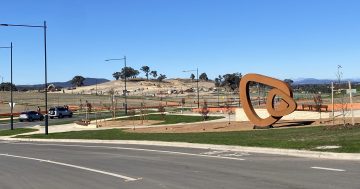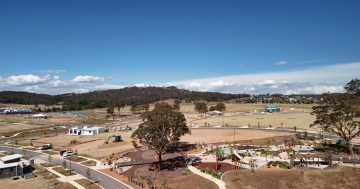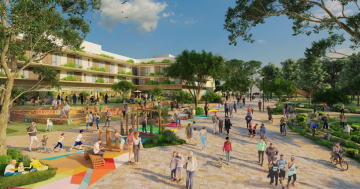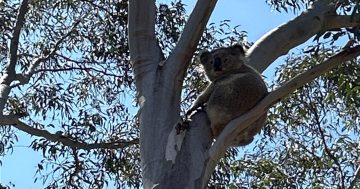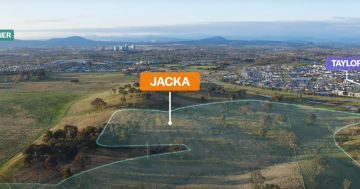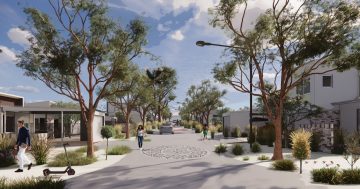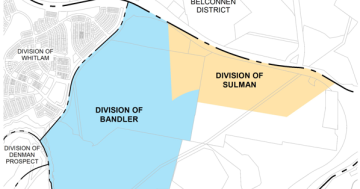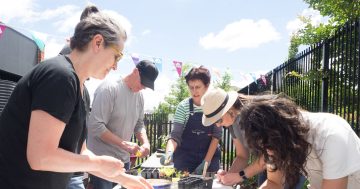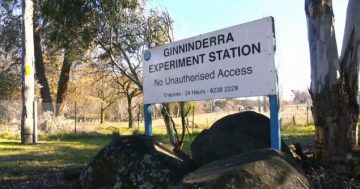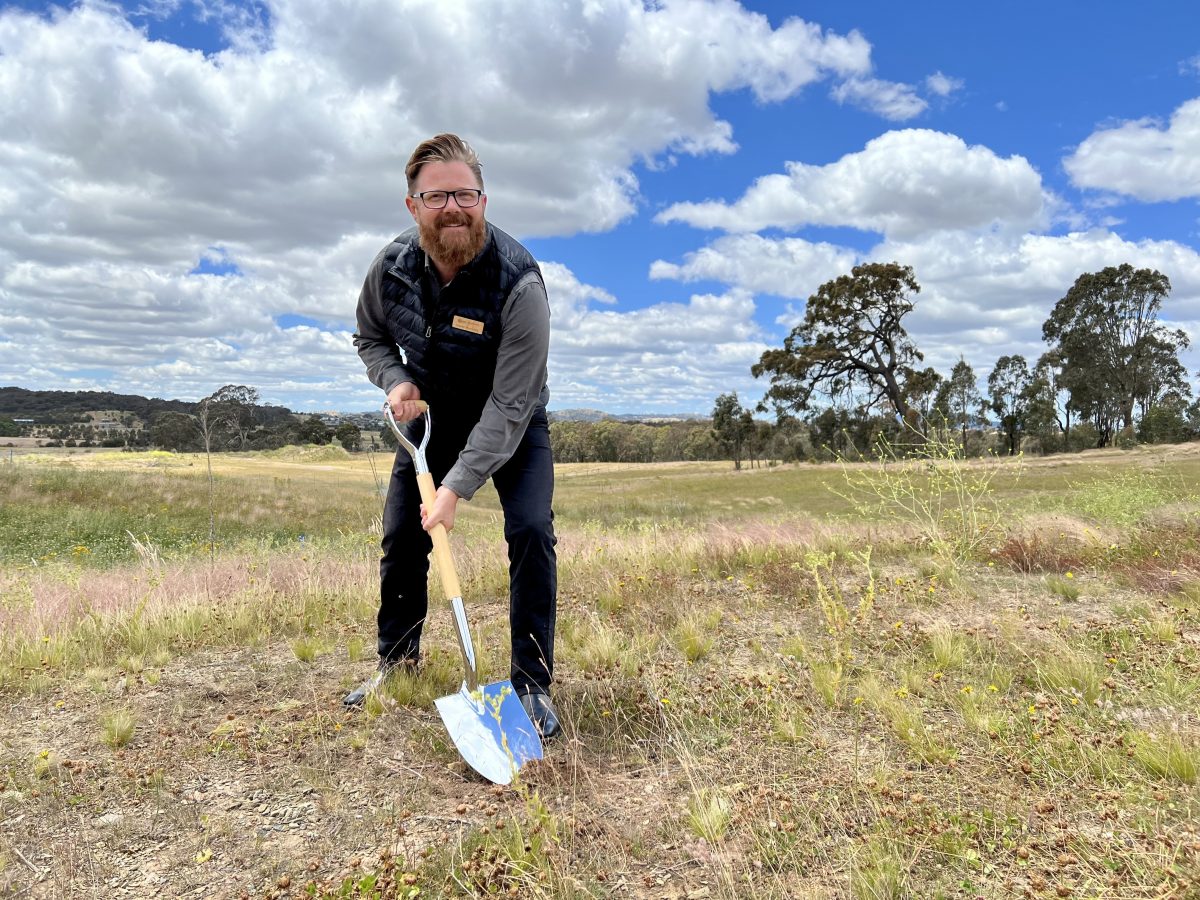
David Thornhill, Program Director, Suburban Land Agency (SLA). Photo: James Coleman.
One of Canberra’s first battery-powered suburbs is a step closer, with the first shovel diving into the dirt for the next stage of Jacka.
Named after Albert Jacka, the first Australian to be decorated with the Victoria Cross during the First World War, the new Gungahlin suburb between Taylor and Bonner is already home to more than 700 people.
Stage 2 will add approximately 700 single residential multi-unit homes and commercial opportunities, plus a nature reserve and local shopping centre.
The headline act, however, is a big community battery powered by the rooftop solar panels the ACT Government will encourage residents to install.
“People will be encouraged to put solar panels on their homes and to store excess electricity in the community battery,” ACT Minister for Housing and Suburban Development Yvette Berry said.
“This will help take us away from fossil fuels and make sure our city can depend on electricity that is sustainably sourced from the sun and wind.”
The Jacka battery project forms part of the government’s plan to grow Canberra’s renewable energy storage sector through its $100 million ‘Big Battery’ project, with help from the Australian National University (ANU). This also includes a proposed 250-megawatt battery built by French company Neoen (also behind South Australia’s ‘Tesla Big Battery’) and 14 smaller batteries at government sites.
“The ACT has become a nation leader on climate action, and now we are making it as easy as possible for Canberra households to benefit from the shift to a low emission technology,” Ms Berry said.
“Building Jacka – one of Canberra’s newest suburbs – as an all-electric, solar-powered suburb will save residents money and set the example of how our future suburbs will be powered.”
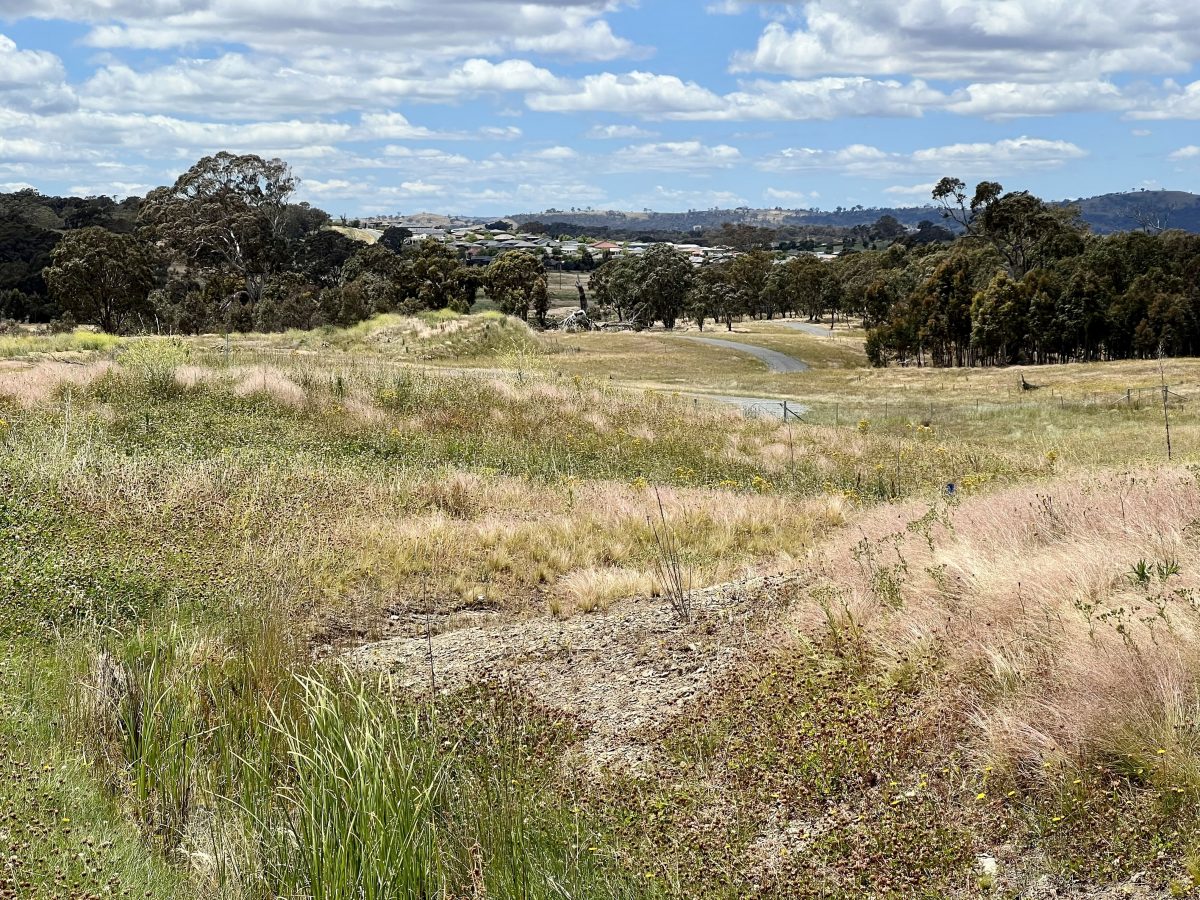
Grassland at the site of Stage 2 of Jacka, Gungahlin. Photo: James Coleman.
Suburban Land Agency (SLA) program director David Thornhill said Jacka’s community battery will be about the size of a small car and provide a minimum of 250 kW upfront capacity.
“Everyone’s excess solar power goes into this when the sun is shining and then everyone can draw off it when needed,” he said.
The project is out for tender, but once a construction company signs on, the exact requirements around size, kilowatt storage, and location will be determined. Mr Thornhill said this assessment will also look at the longevity and recyclability of the battery.
“We don’t want to put infrastructure in and then have to redo it at the end of 10 years.”
The nearby Ginninderry region has also made a name for itself as one of Australia’s most sustainable developments, helped by plans for a 300-megawatt standalone lithium-ion ‘Territory Battery’ about 3 km south of Holt.
This will be able to charge and discharge a total of 600 megawatts per hour (MWh). As the average ACT household consumes 18 kWh (0.018 MWh) each day, this is the equivalent of 400,000 households for two hours.
So far, it has only been trialled over two months in 2021, but construction work is set to begin in about a year, pending development application (DA) approval.
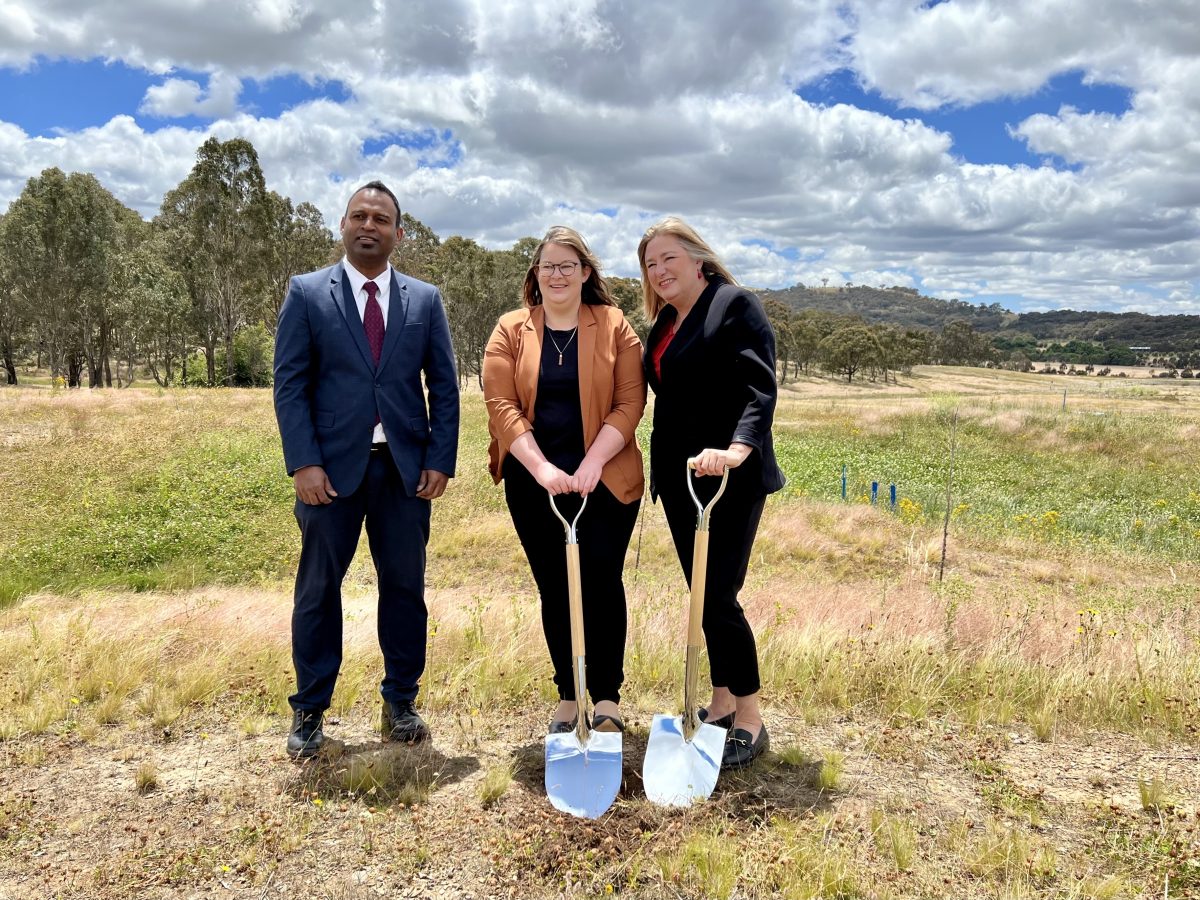
Gungahlin Community Council (GCC) president Henley Samuel, Member for Yerrabi (and Gungahlin resident) Suzanne Orr, and ACT Minister for Housing and Suburban Development Yvette Berry. Photo: James Coleman.
New greenfield developments like Jacka also form part of the ACT Government’s plan to deliver more housing options as Canberra’s population looks set to reach 500,000 by the end of the decade.
“Over the next five years, the government is planning for more land to be available than ever before,” Ms Berry said.
“The government is planning for an increase of around 30,000 dwellings in the ACT over the next five years. This will increase the total housing supply in Canberra from around 180,000 dwellings to around 210,000 dwellings.”
Gungahlin is one of the fastest-growing regions in the ACT and has nearly 90,000 residents. In the past 10 years, the population of Bonner and Casey alone has exploded by more than 300 per cent to 7374 and 6482, respectively.
Gungahlin Community Council (GCC) president Henley Samuel said while the news was exciting, it was important the existing roads and public transport options are brought up to scratch.
“We’re playing a catch-up game and we need to plan ahead,” he said.
“At the moment, we can’t get public transport into Jacka because the roads are too small for buses so they’re having to drop people off outside the suburb. I hope this will be looked into for Jacka too, so the roads will be wider.”
The first blocks for Stage 2 of Jacka will be offered as land for release in 2022-23 as part of the ACT Government’s Indicative Land Release Program.
The construction program for Jacka residential estate starts this month and continues into mid-2024.













